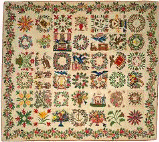Textile Society of America

Textile Society of America: Symposium Proceedings
Date of this Version
2016
Document Type
Article
Citation
Crosscurrents: Land, Labor, and the Port. Textile Society of America’s 15th Biennial Symposium. Savannah, GA, October 19-23, 2016.
Abstract
The history of the Kashmir shawl and its stylistic progress and appropriation by other cultures reveals that an art form can be viewed as is (sui generis), and also in a context of social life that is not always what we would like to celebrate. And because the shawls have been made over centuries, this context has changed frequently.1 The Kashmir shawl is very special because it combines: a material that is extremely rare and luxurious which we now call cashmere or pashmina, a weave structure that is unique in its region and very complex, a symbolism of design motifs that is still debated, color dyes still not fully explored, a design that is also unique for its region. (All the shawls illustrated in this discussion are from my collection and cannot be reproduced.) It is not possible to provide in-depth coverage of all the peregrinations, changes and influences on shawl creation. I will focus on the eighteenth- to the late nineteenth century developments.
Included in
Art and Materials Conservation Commons, Art Practice Commons, Fashion Design Commons, Fiber, Textile, and Weaving Arts Commons, Fine Arts Commons, Museum Studies Commons


Comments
Copyright 2016 Joan Hart